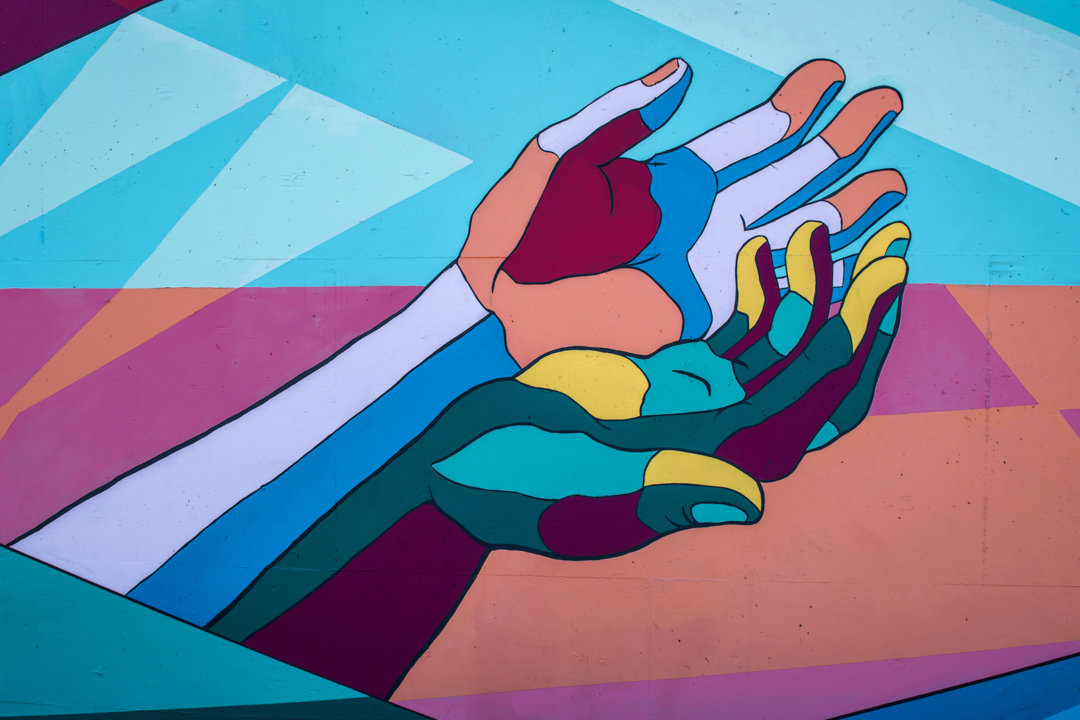What does it look like to heal yourself?
This is the essential question that UTSC alum Nana Adwoa Frimpong aims to answer through her 2022 documentary, Healing in Color. Created as part of an advanced production class at the University of Southern California, Frimpong’s work — which she filmed, directed, and produced — explores how a group of five Black women confront personal struggles and how they heal said struggles through art.
On March 1, Frimpong joined UTSC via Zoom for a virtual screening of Healing in Color. She was joined by the documentary’s cinematographer, Sebastien Cech; the film’s composer; and Madeline Smith, one of the film’s subjects. The screening, which celebrated Black Mental Health Day, was hosted by the UTSC Mental Health Network, UTSC Health & Wellness Centre, UTSC Equity, Diversity and Inclusion Office, UTSC Development and Alumni Relations Office, and the Scarborough Campus Students’ Union.
During the screening, Frimpong discussed the inspiration for Healing in Color, art as a healing tool and the importance of self care.
UTSC as film inspiration
Healing in Color was made as part of an advanced production class at the University of Southern California, which Frimpong attended after graduating from UTSC in 2018. Each semester of the class, three projects were selected to be made.
Frimpong explained that, though she was selected to create Healing in Color three years after graduating from UTSC, much of her documentary was inspired from her experiences there. “When I was on my bed feeling low, wondering what I [could] say or what I could pitch, I came back to myself… I realized that the reason I had come to film school [was] part of the activism I was doing at UTSC.”
This activism, Frimpong noted, centered primarily around healing and “getting more focused on where I was at and how I was feeling and figuring out [how] to bring other people with me.” Frimpong also mentioned that her film highlights “what [she’s] thinking about now,” which is “how Black women participate in a world that is not interested [in] our participation.”
Art as healing
When asked about how creating art can be a form of healing, Smith recalled wearing earrings made by women who were part of the Maasai tribe in Kenya. The women travel to the centre of their village and make these earrings by hand.
Smith explained that the women who make the earrings are “able to talk and care and focus on the gift [that] I think a lot of women — not just women of colour, but a lot of women — have. We become so technology driven that we forget that we’re able to create incredible things with our hands.”
Frimpong related the question about art as healing to her experience spearheading Healing in Color, mentioning that she initially had “a lot of anxiety” about telling the stories of the film’s subjects correctly.
“I realized that I could [say] who I was and say what I wanted to do and that they would… not only meet me there but surpass any kind of expectation that I had,” Frimpong explained. She explained that the process of creating the film showed her “what happens when… you align yourself with your intention.”
Frimpong added that she felt that her intention “permeated throughout the team,” mentioning that the majority of the people who worked on Healing in Color were not Black, “which I think in this really powerful and beautiful way added to the development of the film.”
“It was so beautiful to be in a space with these other folks who don’t necessarily have my shared experience,” Frimpong said. “For them to be consciously and consistently asking questions so as to not overstep, but to honour… [that] was a challenge and also one of the most beautiful, beautiful things.”
Self-care as healing
One of the key takeaways of Healing in Color, said Smith, was its success in celebrating the differences between each unique person. Smith highlighted that being able to express yourself freely is essential to happiness.
Frimpong explained, “Black [women have] the burden and opportunity to heal and pursue themselves [in] a world that isn’t interested all the time… We can’t always [be] in that space because it’s really tiring.”
“Make yourself a priority,” Smith added. “Even if it’s just… watching a movie or listening to music or going for a walk or picking up a pen… I’m a Christian, I’m a minister as well… A lot of people pray for me.”
Smith concluded, “Fill your body with things that are healthy and that are going to help you progress.”


